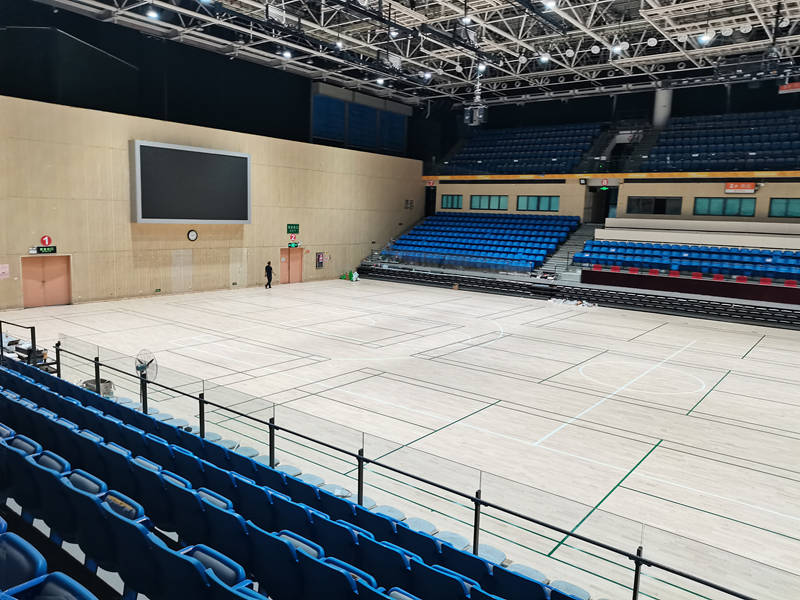The design of sports wooden floor needs to consider many factors.

Based on the characteristics of sports, different sports have different focuses on the performance of the floor. Basketball requires the floor to have high elasticity and good ball rebound ability to meet the frequent jumping, sudden stop, turning and other actions of athletes, while ensuring the normal movement trajectory of the basketball. Volleyball pays more attention to the anti-slip performance of the floor, because volleyball players move fast and change directions on the court, and reliable friction is needed to ensure the stability of the action. Badminton requires high shock absorption performance of the floor. Since the jumping movements of badminton players are relatively light but high frequency, good shock absorption can reduce damage to the joints. Therefore, when designing sports wooden floor, the various performances of the floor should be optimized according to the specific sports.
The frequency of use of the venue is also an important consideration in the design. For public gymnasiums that are frequently used, the floor should have higher wear resistance and durability. You can choose better panel materials, such as maple panels with larger thickness and higher hardness, and use more wear-resistant coatings in the paint process. At the same time, the keel structure and elastic cushion design of the bearing layer should also be more solid and stable to withstand long-term high-intensity use. For venues such as school gymnasiums with low frequency of use, the material selection and structural design can be appropriately adjusted to control costs while ensuring basic performance.
The spatial layout of the venue will also affect the design of sports wooden floors. For example, in larger indoor venues, when installing the keel, the impact of temperature changes on the floor should be considered, and expansion joints should be reasonably set to prevent the floor from deforming due to thermal expansion and contraction. For venues with special shapes or irregular areas, precise measurements and planning should be carried out in the panel laying design to ensure that the floor is laid tightly and beautifully without affecting sports performance. In addition, the connection between the floor and surrounding facilities should also be considered, such as the transition treatment with walls, stands, etc., to ensure the safety of athletes during exercise.
